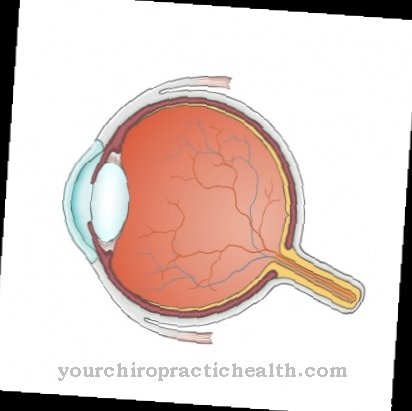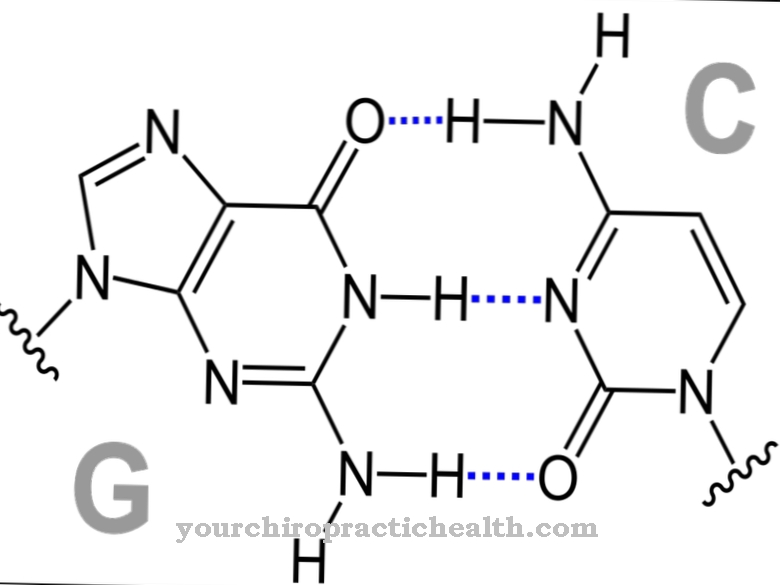Of the Biceps tendon reflex is an innate and monosynaptic self-reflex that belongs to the stretch reflexes. Reflectively, the biceps muscle contracts after a blow on the biceps tendon and thus flexes the forearm in the elbow joint. With peripheral and central nerve damage, the biceps tendon reflex can be changed.
What is the biceps tendon reflex?

The biceps brachii muscle is a two-headed upper arm muscle with two joints. The associated tendon is the biceps tendon. The reflex contraction of the biceps muscle after a blow on the biceps tendon is called the biceps tendon reflex.
Motor reflexes of the human body are either external or self-reflexes. The biceps tendon reflex is a single reflex. It has its afferent and efferent pathways in the same organ. It is triggered, so to speak, directly at the location of the reflex response and is monosynaptic.
The reflexive contraction of the biceps brachii muscle causes the forearm to bend in the elbow joint. In this reflex, the effector and receptor are located in the musculocutaneous nerve. The nerve mediates the reflex response via the motor neurons in the spinal cord segments C5 and C6.
The biceps tendon reflex is assigned to the innate reflexes and corresponds to a stretch reflex to protect the associated structures.
Function & task
The two-part biceps brachii muscle runs over the shoulder joint and the joint of the elbow. The muscle is a flexor muscle and, by contraction, bends the forearm in the elbow. The origin of the long muscle part is the supraglenoid tubercle on the scapula. The short muscle head arises from the coracoid process. The sinewy attachment is the radial tuberosity of the radius and fascia on the forearm. The original tendon of the longer head runs through the humoral sulcus intertubercularis and the joint capsule in the shoulder joint to the tuberculum supraglenoidale. There it is surrounded by the vagina synovialis intertubercularis. The musculocutaneous nerve arises from the brachial plexus of the spinal cord segments C5 to C6 and C7.
This nerve innervates the biceps muscle and thus connects it to the nervous system. The musculocutaneous nerve is a mixed nerve that innervates its supply area both sensibly and motorically. The nerve motor innervates the upper arm muscles, coracobrachialis, brachialis and biceps brachii muscles. It sensitively innervates the joint capsule in the elbow joint and some areas of skin on the spoke side of the forearm. This mixed innervation allows the nerve to serve as both an effector and a receptor in the context of the biceps tendon reflex.
The stretch receptors in the sensitive sections register the stretch that the biceps tendon and the muscle spindle go through with one stroke. This stretch information is reported to the spinal cord, where it receives motor reflex responses. The motor sections of the musculocutaneous nerve pass this information on to the biceps muscle and thus initiate the reflex contraction. The connection via the spinal cord guarantees a quick reflex response.
The sensitive afferents of the biceps tendon reflex are at the contractile center of the biceps muscle spindle fibers. During stretching, an action potential is generated in these fibers, which is transmitted to α-motor neurons via a single synapse in the anterior horn of the spinal cord.The motor neurons cause the skeletal muscle fibers in the biceps to contract. Negative feedback maintains a fixed muscle length in the reflex movement regardless of any disturbance.
Since the reflex response is supposed to protect the muscle, a high conduction speed is essential for the success of the reflex movement. The conduction speed of α motor neurons is around 80 to 120 ms − 1.
Illnesses & ailments
The doctor examines the biceps tendon reflex as part of the reflex examination or neurological diagnostics. The reflex can be triggered both while sitting and lying down. The slightly bent forearm of the patient is stabilized by the doctor. He lightly strikes the biceps tendon in the crook of the elbow with the reflex hammer. He performs this procedure on both sides and looks at the reflex response in a side-by-side comparison. If the biceps tendon reflex behaves abnormally on one or both sides, various nerve damage may be the cause.
The reflex is either diminished or exaggerated. If, for example, the biceps muscle does not contract after being hit on the tendon, or if it shows a reduced response, a peripheral nerve injury is probably the cause. Nerve injuries in the peripheral nervous system can be triggered by trauma caused by an accident.
Nerve diseases can also be responsible for the decreased reflex behavior of the upper arm muscle. A conceivable disease would be polyneuropathy, for example, which is often triggered by malnutrition, a symptom of intoxication or an infectious disease.
If the biceps tendon reflex is not absent, but is pathologically increased, then a lesion of the pyramidal tracts in the spinal cord is probably responsible for the changed reflex behavior. The pyramidal tracts connect the central motor neurons with each other and control the voluntary and reflex motor skills. If this area is damaged, so-called pyramidal trajectories appear. In order to confirm the suspected diagnosis of pyramidal damage, the doctor checks the patient not only for the biceps tendon reflex, but also for pathological reflex movements from the Babinski group. If there are any, he assumes damage to the central motor neurons.
Such damage can occur in the context of diseases such as multiple sclerosis or ALS. In MS, your immune system creates inflammatory lesions in the central nervous system. ALS, on the other hand, is a degenerative disease that specifically degrades the motor nervous system.
A slightly increased biceps tendon reflex does not necessarily have to be pathological, but can also be related to a physiologically lively reflex response of the patient.




























.jpg)